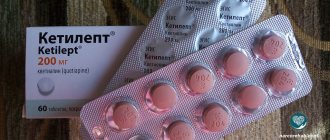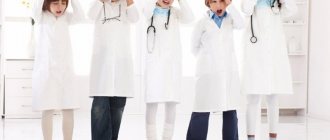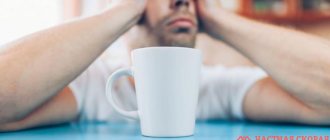Anxiety and depression are extremely common throughout the world. An estimated 264 million people suffer from anxiety and 322 million suffer from depression, according to the WHO. Anxiety and depression, along with concerns about the cost, ineffectiveness or side effects of standard medications, are common reasons why people seek home remedies for anxiety.
Increased anxiety and depression can cause significant symptoms and disruption in daily life and can contribute to insomnia, another common reason why people seek herbs for anxiety and fear. These factors can impair mental well-being.
We will identify some of the most common herbal remedies used for these conditions. We will also look at the use of folk remedies for dementia, as this condition is also associated with mental well-being. In addition, dementia is very common, affecting up to 50 million people worldwide, and the rate of the disease is accelerating.
Folk remedies for anxiety and depression
Kava (Piper methysticum)
The kava plant, native to the South Pacific, has a rich tradition of use for both therapeutic and ceremonial purposes. In one traditional kava ceremony, the root of the plant is cut into small pieces, which are chewed and then spat into a wooden bowl. The roots are then mixed with coconut milk and drunk. Scientifically speaking, chewing helps release the active ingredients in the kava plant, which can also be achieved by chopping or rubbing the roots.
Today we know that the kava plant is rich in kavalactones, which act as a mild muscle relaxant and help ease anxiety. Kava works in the same way as a benzodiazepine, a pharmaceutical drug, but with a milder and less sedating effect.
Kava is safe for short-term use, but should not be used long term as the plant may cause liver harm. Avoid using kava if you have a diagnosed liver disease, drink alcohol, or take any medications that affect the liver. If you decide to take kava for more than two weeks, it is recommended to have liver function tests every two to three weeks.
Gaia Herbs, Kava Kava Root, Herbal Extract, 1 fl oz (30 ml)
Combination of psychotherapy and pharmacological treatment
Few data are available on the use of combinations of psychotherapy and pharmacological treatment. A meta-analysis showed that the combination of pharmacological treatment with CBT was more effective than CBT alone when comparing results immediately after treatment, but not after six months. Data are available from studies comparing the combination of diazepam or buspirone plus CBT with CBT alone. The small number of studies comparing pharmacotherapy with pharmacotherapy plus psychotherapy has produced conflicting results.
There is currently no rationale for combining CBT with pharmacotherapy. But, as with other anxiety disorders, if the patient does not improve with CBT, the use of pharmacotherapy is recommended. Likewise, if pharmacotherapy does not improve, then CBT can be expected to help. Meta-analyses and several RCTs suggest that psychotherapy benefits are maintained 1-3 years after treatment.
Melissa officinalis
Melissa officinalis is a delicious and versatile folk remedy for anxiety. Historically referred to as the "pleasure herb" or "heart's delight", due to its relaxing properties that promote feelings of calm and well-being. This gentle relaxant can help reduce stress and relieve mild anxiety. Thanks to its carminative properties, lemon balm can also relieve mild stomach discomfort. A great way to consume lemon balm is with your evening cup of tea to help you relax and calm down. Melissa has an excellent safety profile.
This is a wonderful herb that everyone should have in their home. It is easy to grow at home or can be purchased at iherb.com.
Frontier Natural Products, Organic Lemon Balm, Cut and Sifted, 16 oz (453 g)
Steps to Control Anxiety
Before diving into the many anxiety medications, it's helpful to learn about how anxiety affects us and the steps we can take to reduce it for good. They are relatively simple, and following them can significantly improve our mood over time. However, these steps will not work if the anxiety you are experiencing is caused by medications, medications, or illnesses. Such causes must be considered on a biological rather than a psychological scale.
- Learn Our Anxiety - First, let's learn our thoughts. What are we always thinking about? Why do we think? Is there anything we can do to eliminate these thoughts in the moment, and if not, why do we choose to focus on them when we can't do anything about them at this time?
- Take action - Decide on a medicine or remedies. We need to make sure we are comforted and help our minds and bodies relax, losing ourselves in the moment and not being afraid to put all thoughts aside as our muscles and heart rate relax.
- Follow a schedule - Once we have decided on what defenses we need, we must be consistent in handling those controls. Schedule a time every day or every other day to begin treatment. This is when we can change the medications we have also chosen, decide if one is better than another or if we prefer something else. The more consistent we are in using our medications, the more successful we will be in eliminating anxiety.
- Involve Family or Friends Connect with your loved ones. If we tell our family or friends about new activities or foods/drinks we are taking to relieve stress in our lives, we are more likely to continue taking those remedies. This will also give us a way out. If the anxiety we experience is suppressed from within, then connecting with others helps us greatly so that we can connect with others on the path to healing. This way we know we are not alone.
- Break the Cycle - Of Unwanted Thoughts! After trying treatment (or more) for two weeks, take a close look at the stress and anxiety you are currently experiencing. Has it decreased? Do we feel a little happier? Or are we the same? We may need to switch to a different medication, or we may find that the medications we choose work well for us. In any case, we must evaluate whether our anxiety is decreasing and whether we can concentrate better in the moment.
- Let go of worries Once you find and use the right remedies, it's time to put aside all the unwanted thoughts and worries that once plagued our bodies and minds! Recognizing a new position in events/situations/topics/etc. is the key to letting go of our past fears of the future.
Passionflower (Passiflora incarnata)
Passionflower (passion flower) is a beautiful plant known for its showy, colorful flowers and edible fruit. Grows well in tropical climates. The aerial parts of the flower are used for medicinal purposes as a relaxant with anti-inflammatory properties. The German Commission E has approved the use of passionflower for the treatment of insomnia and nervousness.
Another common use of this plant is to treat addictions, although clinical evidence for this is lacking. Passionflower has been studied in combination with clonidine, a pharmaceutical used in the treatment of opiate addiction. Opiate withdrawal has physical symptoms such as high blood pressure, nausea, vomiting, abdominal cramps, and diarrhea, in addition to emotional symptoms of anxiety, cravings, irritability, and depression. The results of the study are as follows: the combination of passionflower and clonidine was effective in reducing emotional and physical symptoms. Without the use of Passifdler, clonidine only relieved physical withdrawal symptoms.
Passionflower should not be used with monoamine oxidase inhibitors (MAOIs) or other sedative agents.
Now Foods, Passionflower, 350 mg, 90 Vegetarian Capsules
Related articles:
- Magnesium glycinate - instructions, preparations
- Saffron - properties and uses
Diagnosis
GAD is characterized by increased anxiety and worry (most days during the past six months) about a variety of events and activities, such as school or work. In addition, GAD is associated with restlessness, muscle tension, fatigue, problems concentrating, irritability and sleep disturbances.
DSM-5 criteria for diagnosing GAD
- Excessive anxiety and worry (anxious anticipation) about a variety of events and activities, such as school or work.
- The person has difficulty gaining control over anxiety
- Excessive anxiety and worry are associated with at least three of the following symptoms, affecting a person most days for at least six months: Restlessness or feeling on edge, fatigue, difficulty concentrating, irritability, muscle tension or sleep disturbances
Chamomile (Matricaria recutita)
Chamomile is a member of the chamomile family. It has a rich tradition of using its relaxant and carminative properties, making it effective in relieving mild indigestion. Chamomile is often used in combination with other anti-anxiety remedies to help with insomnia.
Chamomile has an excellent safety profile and is a gentle herb that is easy to use. Chamomile should not be used by people who are allergic to plants in the ragweed or chamomile family. It is also best avoided by those taking blood thinning medications.
Nature's Way, Chamomile Flower, 350 mg, 100 Vegetarian Capsules
Acknowledging concerns
It is one of the most commonly untreated conditions experienced by the vast majority of the world's population. Our lives are stressed because we don't realize how much worry has consumed us, and learning to let go of worry can be as simple as taking five minutes a day to clear our mind. However, we should not fall into the reckless course of believing that our problems can only be solved if we constantly think of solutions.
Anxiety hangs over our heads when our minds are always racing; When we cannot focus on the moment that surrounds us. Knowing that we have difficulty seeing and living in the moment is the first step to solving our unhappiness, even if we are not aware that we are unhappy.
Hops (Humulus lupulus)
Many people are familiar with hops from their use in brewing. Hops give beer a bitter taste. Hops also have the ability to promote relaxation and sleep, a quality first noted in Europe among workers in hop fields who fell asleep on the job. Hops are often used in combination with other herbs to help with insomnia. It also acts as a phytoestrogen, which means it can mimic estrogen in the body. It is unclear what effect this may have, so caution is advised and not to use this herb in women who have had breast cancer or are at increased risk for it.
Hops have a bitter taste, so keep that in mind if you're brewing them. Standardized hop extracts are also available for those who do not like the bitter taste.
Nature's Way, Hops Flowers, 310 mg, 100 Capsules
Valerian (Valeriana officinalis)
Valerian has fragrant white or pink flowers that were used to create perfume centuries ago. Today, valerian is a popular folk remedy for anxiety and is often used in combination with other herbal sleep remedies.
It should be noted that you need to take valerian for several weeks to notice the effects, so it will not be useful for acute insomnia. Valerian can also be used in small doses throughout the day to relieve mild anxiety. Unlike many medications used to treat insomnia, it has the advantage of not being addictive.
Valerian has a good safety profile, but should be avoided during pregnancy/lactation and in children under 3 years of age. It is not recommended to be used as tea as it has a very unpleasant taste.
Eclectic Institute, Natural Valerian, 2 fl oz (60 ml)
Publications in the media
Emotions constitute an integral component and manifestation of human life. There are only two types of positive emotions: joy and interest. Negative emotions have a wider spectrum than positive ones and are divided into biological (anxiety, fear, suffering, anger and their derivatives) and social (shame, guilt, fear of losing one’s self). A special place among them is occupied by anxiety, which is one of the most ancient evolutionary mechanisms. Its biological significance is that it, as an analogue of an active-defensive reaction, provides the body with preparedness for action in a situation of stress. According to R. May [7], “anxiety is fear in a situation where a value is under threat, which, according to a person’s feeling, is vitally important for the existence of his personality.” In this context, anxiety is natural, adequate, and useful. However, under a number of objective and subjective conditions, anxiety becomes excessively expressed, loses its adaptive nature and is considered pathological (
). Transforming from normal to pathological, anxiety becomes the basis for the formation of anxiety disorders (AD).
Etiopathogenesis and epidemiology of TR
Currently, during times of stress and overload, the prevalence of TD in the population is very high [1, 10]. According to foreign literature, at one time 9% of the world's population suffers from some kind of TR, and almost 25% of people suffer from TR throughout their entire life.
The biological and psychological prerequisites for the formation of TR are considered [2]. Psychological aspects of etiopathogenesis are presented within the framework of various psychological theories. In particular, psychoanalytic theory views anxiety as a signal of the emergence of an unacceptable, forbidden need or impulse that prompts the individual to unconsciously prevent its expression. From the standpoint of behaviorism, anxiety and, in particular, phobias initially arise as a conditioned reflex reaction to painful or frightening stimuli. Cognitive psychology focuses on erroneous and distorted thought patterns that precede the onset of anxiety.
Biological theories take the biological criterion, i.e., the specific state of the brain substrate, as the basis for defining the concept. In this paradigm, any TR is considered as a consequence of cerebral pathological changes, the identification of which is associated with further improvement of diagnostic technologies. In particular, studies of the bioelectrical activity of the brain of patients with TD show differences in the spatial-frequency characteristics of the electroencephalogram (EEG) in individuals with increased levels of anxiety [3, 5]. A study of the level of cerebral metabolism suggests that the basis of the brain support for reactive anxiety is a system whose most stable links are cerebral structures such as the superior parietal associative cortex, the parahippocampal gyrus, the thalamus and caudate nucleus, and the amygdala [2, 12].
The peculiarity of the modern approach to the study of anxiety is the idea of its multifactorial nature, based on the recognition of the unity of the biological, psychological and social components of anxiety.
Classification of anxiety disorders
Existing classifications of TD involve the formation of independent rubrics based on the understanding of anxiety not as a syndrome, but as a separate diagnostic unit. Anxiety and TD are considered in the two most widely used diagnostic systems - ICD-10 and the American DSM-IV-TR.
ICD-10 does not use the traditional differentiation between neuroses and psychoses, which was used in ICD-9. However, the term "neurotic" is retained in the title of the large group of disorders F40-F48 "Neurotic, stress-related and somatoform disorders."
The Diagnostic and Statistical Manual of Mental Disorders DSM-IV-TR (2000) used the term “neurosis” to describe anxiety disorders before the classification was reissued in 1980. However, in the future, a trend of increasing clinical “fragmentation” of TD began to take place, which was reflected in later classification systems of behavioral and mental disorders.
Clinical characteristics of anxiety disorders
The group of TD includes several rather heterogeneous diseases, connected by one common feature - a high level of anxiety, which is persistent in nature, may or may not be limited to any specific circumstances (fixed or unfixed, personal and situational).
Clinically, TR is manifested by mental and somatic (vegetative) symptoms, an important distinguishing feature of which is their polysystemic nature.
The most common mental manifestations of TR are:
- fears (worry about future failures, feelings of excitement, difficulty concentrating, etc.);
- worrying about little things;
- irritability and impatience;
- feeling of tension, stiffness;
- fussiness;
- inability to relax;
- feeling nervous or on the verge of a breakdown;
- inability to concentrate;
- memory impairment;
- fast fatiguability;
- fears;
- obsessive thoughts, images.
Autonomic (somatic) manifestations of anxiety include:
- sweating, cold and wet palms;
- dry mouth;
- feeling of a “lump” in the throat;
- feeling of lack of air;
- muscle tension and pain;
- nausea, diarrhea, abdominal pain;
- dizziness;
- fainting state;
- decreased libido, impotence;
- muscle tension and pain;
- cardiopalmus;
- hot or cold flashes.
A characteristic property of anxiety is not only the anticipation of a particular danger, but also the motivation to search for and specify this danger, which leads to the formation of certain syndromes. The formation of one or another clinical syndrome, i.e., one or another variant of TR, depends on the path followed by the specification (realization) of anxiety.
Characteristics of the main variants of anxiety disorders
Generalized anxiety disorder (GAD) (F41.1) is characterized by anxiety that is generalized and persistent, not limited to any specific environmental circumstances, and does not even occur with a clear preference in those circumstances (i.e., is “unfixed”).
To make a diagnosis, primary anxiety symptoms must be present for at least six weeks. Most often they serve in this capacity:
- restlessness, fussiness, or impatience;
- fast fatiguability;
- disorder of concentration and memory;
- irritability;
- muscle tension;
- sleep disturbance.
Diagnostic criteria for GAD are less clear than for other variants of GAD, and are rather based on the principle of exclusion. According to most researchers, GAD does not represent a single diagnostic category, but rather reflects a special disturbing phenomenon that occurs with different diagnoses.
The remaining TRs, classified under other headings and subcategories, are essentially determined by the above criteria (most of them or only part) and additional criteria that determine the specifics of a particular TR.
The main feature of panic disorder (F41.0) is periodically recurring panic attacks that occur spontaneously, suddenly, without any visible connection with external stimuli (“like a bolt from the blue”), last 5–30 minutes and are accompanied by symptoms such as shortness of breath, palpitations , dizziness, choking, chest pain, trembling, increased sweating and fear of dying or going crazy. Attacks often occur in a situation where patients are restricted in their freedom of movement or in a room from which they cannot escape and where they cannot get help.
Panic disorder is often accompanied by agoraphobia. Currently, this term is interpreted more broadly than before, and includes fear not only of open spaces, but also of any situations from which it is not possible to immediately get out and return to a safe place. Although agoraphobia is considered a separate disorder, it often serves as a defense mechanism for panic disorder: by staying at home or leaving it only with an accompanying person, sufferers thereby avoid stress, reducing the likelihood of an attack.
Phobic anxiety disorder (F40) clinically manifests itself as overvalued fears that are not justified by a specific threat or do not correspond to its level of significance.
The following are the characteristic properties of phobias:
- expressed and persistent or unreasonable fear associated with the presence or expectation of a specific object or situation;
- immediate phobic reaction to an alarming stimulus;
- the patient’s awareness of the excessiveness and irrationality of fear;
- avoidance of phobic situations;
- pronounced distress associated with awareness of the phobia.
The topics of phobias are varied. One of the most common types of phobias - nosophobia (fear of illness, for example, cancerophobia) - is often provoked by the illness of someone you know. Even a thorough medical examination rarely brings relief.
Agoraphobia (F40.0) is specific to the fear of being in a crowd of people, in a public place, or on any trip, especially on your own. As mentioned earlier, agoraphobia can accompany panic attacks, but can also occur without them.
Social phobia (F40.1) - severe fear of being the center of attention or fear of behaving in a way that causes embarrassment or humiliation in certain situations, such as socializing or eating in public, public speaking, meeting familiar faces in public, visiting public restrooms, being in small groups (e.g., parties, meetings, classrooms), etc.
The defining criterion for specific (isolated) phobias (F40.2) is fear within a strictly limited situation or strictly defined objects (heights, snakes, spiders, airplane flights, etc.). As with social phobias, avoiding significant situations in some cases helps patients adapt quite successfully to everyday life.
Obsessive-compulsive disorder (F42) includes compulsions, which often lead to the formation of obsessive actions and rituals (compulsions). Obsessions are ideas, thoughts, or impulses that persistently and persistently pursue a person and that are perceived as painful and unpleasant, such as blasphemous thoughts, thoughts about murder, or thoughts about sex. They are characterized by the following signs:
- perceived as intrusive and inappropriate;
- are not the result of excessive worry about real problems;
- accompanied by an unsuccessful desire to suppress, avoid, ignore them, or neutralize them with other thoughts or actions;
- are recognized by the patient as a product of his own psyche.
Compulsivity is a repetitive, goal-directed, and intentional behavior that occurs as a reaction to compulsions in order to neutralize or prevent psychological discomfort.
Examples include obsessive thoughts about dirt and pollution, leading to compulsive washing and avoidance of “polluting” objects, pathological counting, and compulsive checking, such as repeatedly checking that the gas is off, or returning to the same street to make sure no one is there. crushed, etc.
Post-stress anxiety within post-traumatic stress disorder (F43.1) develops after life-threatening situations or disasters (military operations, nuclear power plant accident, car accident, fire, flood, rape). Characterized by persistent painful memories, increased excitability, irritability and outbursts of anger, sleep disturbances and nightmares, including pictures of the experienced situation, feelings of loneliness and mistrust, a feeling of inferiority, avoidance of communication and any activities that may remind of the events that occurred.
Mixed anxiety and depressive disorder (F41.2) is diagnosed when the patient has symptoms of both anxiety and depression, but neither one nor the other is clearly dominant or severe.
Within the framework of specific personality disorders (F60) (it should be remembered that pronounced personality disorders are psychopathy familiar to the Russian-speaking reader), anxious (“avoidant”, “avoidant”) personality disorder (F60. 6). To some extent, it resembles a sensitive type of psychopathy, which was not always distinguished in Russian classifications. From early childhood, patients are characterized as timid, shy people with low self-esteem. An exaggerated fear of arousing even a slight critical attitude leads them to avoidant behavior.
In its clinical picture, dependent personality disorder (F60.7) is very close to the anxious type. It, like the previous one, was also borrowed from the DSM and was absent from classical Russian and German psychiatry. Self-doubt, fear of displaying any noticeable reactions (especially sexual and aggressive) are combined with expressed anxiety, fear of being abandoned by a significant person.
Features of the manifestation of anxiety in childhood are:
- prevalence of obsessive-phobic disorders;
- more pronounced somatization of anxiety;
- pronounced behavioral disorders: limited contact, fussiness, restlessness, aggressiveness;
- self-doubt, low self-esteem;
- constant need for adult support;
- the presence of specific variants of anxiety disorders in children.
Specific TDs of childhood are presented in the heading F93 “Emotional disorders of childhood.” Most of them are essentially exaggerations of normal trends in the process of development, rather than qualitatively new phenomena. An example is separation anxiety disorder in childhood (F93.0). Such children do not develop skills of independent behavior and the fear of separation acquires exaggerated proportions. Anxiety in a child can take the following forms:
- persistent, unrealistic fear of misfortune that could happen to the main person in his immediate environment, or fear that his parents will leave him and not return;
- an unrealistic fear that some untoward event will separate the child from the person for whom great affection is felt;
- refusal to go to sleep alone or away from home for fear of losing a significant person;
- recurring nightmares about separation;
- reappearance of somatic disorders in situations related to separation;
- recurrent distress (anxiety, crying, irritation, apathy, withdrawal, etc.).
The Pediatric Phobic Anxiety Disorder rubric can only be used for developmentally specific fears that meet the criteria of the F93 rubric:
- onset at a developmentally appropriate age;
- the degree of anxiety is excessively expressed and causes a clear decrease in social adjustment;
- anxiety is not part of a more generalized disorder.
Childhood social anxiety disorder (F93.2) is used only for disorders that occur before age 5 years and do not correspond to typical age-specific presentations. Noteworthy is the pronounced difference between behavior at home and in non-family social situations, which is accompanied by problems of social functioning.
Treatment of Anxiety Disorders
Experience with patients suffering from TD inevitably leads clinicians to the conclusion that an integrated approach combining psychotherapy, psychopharmacotherapy and social-environmental influence is maximally effective (
).
The main method in a complex therapeutic complex for TR is psychotherapy [4, 11]. Currently, a psychotherapist has a large arsenal of tools at her disposal, ranging from simple ones that solve the problem of symptomatic improvement to complex ones aimed at resolving the patient’s internal conflicts. Most psychotherapy regimens are based on the assumption that anxiety is caused by an exaggerated assessment of the threat or an incorrect interpretation of one's own state of increased activation. In this case, either the external danger is overestimated or one’s own abilities to cope with it are underestimated. Anxious fears and a feeling of helplessness arise, in which increased attention is paid to one’s internal state. Increased alertness leads to a narrowing of attention and a decrease in its concentration, as well as to violations of self-control and correct response. The most important goal of psychotherapy is to gradually bring patients to an awareness of the essence of their psychological conflict and then to a gradual modification of previous inadequate patterns and attitudes and, ultimately, the development of a new, more harmonious and flexible system of views and relationships, more mature adaptation mechanisms, restoration of self-control and adequate response. The content of the main psychotherapeutic methods effective in working with anxiety disorders is given in
.
All of the above methods are equally effective for various types of TR, however, it is worth noting that certain techniques are more preferable and, in a certain sense, specific for specific forms of TR (
).
Psychopharmacotherapy plays a special role in the treatment of TR (
). Currently, there is a rich arsenal of anti-anxiety drugs that can influence not only mental, but also somatic manifestations of anxiety.
The formation of anxiety is based on an imbalance of certain mediators: serotonin, norepinephrine and GABA. Anti-anxiety drugs mainly realize their effect through these mediator systems. Among GABAergic anxiolytics, the leading place is occupied by benzodiazepine tranquilizers. The main advantages of benzodiazepine anxiolytics are the rapid and real achievement of a therapeutic effect. Among the disadvantages of treatment with benzodiazepines, the following should be mentioned: “recoil” syndrome (rapid resumption or transient increase in symptoms after discontinuation of the drug), the risk of addiction and the formation of drug dependence, impaired cognitive functions (attention, concentration, memory), and impaired coordination. Therefore, benzodiazepine drugs should not be taken for longer than 2–4 weeks.
In connection with the above “benzodiazepine” problems, a new generation of non-benzodiazepine anxiolytics is being widely introduced into clinical practice. These include, in particular, blockers of histamine H1 receptors: tofisopam (Grandaxin), which has an anxiolytic effect, is a psychovegetative regulator, and also does not have a sedative and muscle relaxant effect, and hydroxyzine (Hidroxyzine, Atarax), which has a rapid onset of effect, absence of addiction and drug dependence, does not impair cognitive functions, has antipruritic and antiemetic effects.
Other non-benzodiazepine anxiolytics include the azapirone drug buspirone (Spitomin) and Afobazole (prevents the development of membrane-dependent changes in the GABA receptor).
Tricyclic antidepressants, selective serotonin reuptake inhibitors (SSRIs), and dual-acting antidepressants act on anxiety through the serotonergic systems.
The first-line drugs for the treatment of anxiety disorders are benzodiazepine tranquilizers and SSRIs; tricyclic antidepressants and non-benzodiazepine anxiolytics are considered second-line drugs.
In some cases, a positive effect in the treatment of anxiety is achieved with the use of antipsychotics - thioridazine (Sonapax), sulpiride (Eglonil), tiapride (Tiaprid), etc. However, it should be remembered that when prescribing antipsychotics, weakness, decreased blood pressure, menstrual irregularities, weight gain, colostrum secretion, decreased libido.
Beta-adrenergic blockers (such as propranolol and atenolol) are especially effective when the autonomic component of TR is pronounced, as they block the physical symptoms of chest pain, throat constriction and shortness of breath without having a sedative (relaxing) effect.
In some cases, psychotropic drugs may be poorly tolerated by patients due to side effects, which ultimately neutralizes their therapeutic effectiveness. Official herbal preparations, which have significantly fewer side effects, can be considered as an alternative therapy or used to enhance the effectiveness of prescription drugs. The main indication for the use of this category of drugs is short-term subsyndromal or “undeveloped” (mild) anxiety disorders.
Among the herbal medicines used by clinicians to treat subthreshold anxiety, the drug Novo-Passit has become widespread, which has shown its effectiveness, the possibility of use in a wide variety of age groups [6, 8], the absence of any side effects, high anxiolytic activity and, finally, , which is very important, its availability. The active components of the drug are dry extracts of medicinal plants with pronounced sedative activity (hops, St. John's wort, lemon balm, passionflower, elderberry, valerian, hawthorn) and guaifenesin, which has a pronounced anxiolytic effect.
Due to its unique composition, Novo-Passit is often prescribed to children and adults with various forms of anxiety disorders. The sedative and anxiolytic effect of the drug helps eliminate anxiety and associated autonomic symptoms: sleep disorders, muscle tension, headaches and asthenia. The drug is non-toxic, safe and non-addictive.
Homeopathic anti-anxiety medications have become another alternative to medications. These drugs include Tenoten, which contains fine regulators - antibodies to the S-100 protein contained in the parts of the brain responsible for an adequate emotional response. As a result, its GABA-mimetic effect is realized and GABAergic neurotransmission is restored. The clinical effect is manifested by a decrease in anxiety and improvement in cognitive functions [9].
The choice of psychotropic drug depends on the characteristics of the TR:
- degree of severity of anxiety level;
- duration of the disease (acute, chronic);
- type of course (paroxysmal or permanent disorders).
As the clinical picture becomes more complex and anxiety becomes chronic, priority is increasingly given to antidepressants or combination therapy.
Among other drugs used in the treatment of TR, one can note drugs that improve hemodynamic and metabolic processes in the central nervous system (piracetam (Nootropil), gamma-amino-butyric acid (Aminalon), for children - hopantenic acid (Pantogam)). These drugs, having a direct activating effect on the integrative mechanisms of the brain, stimulate cognitive processes, increase the brain’s resistance to “aggressive” influences, improve cortico-subcortical connections, facilitate the transfer of information between the hemispheres, and improve synaptic transmission in brain structures. In solving this problem, the drugs Neuromultivit and Enerion, which act on the structures of the reticular formation and have a stimulating effect, have proven themselves well.
Currently, material is accumulating in world clinical practice indicating that specially selected “afferent (sensory) inflows” help optimize autonomic regulation in various pathological conditions, in particular in TR (Gudzzetta CE, 1989; Malyarenko T.I. and co-authors, 1998, 2000; Zavyalov A.V., 2000; Govsha Yu.A., 2003). To solve these problems, acoustic (music), olfactory (smells), visual and other sensory inputs are used, as well as combined forms of psychosensory influence in the complex therapy of TD. In the complex of TR therapy, other methods based on physiogenic effects are also used: reflexology, massage.
Based on the above, it seems important to increase the awareness of general specialists about the features of diagnosis and treatment of TR. Modern approaches to the treatment of TD are based on an integrative approach, combining psychotherapy, psychopharmacotherapy and social-environmental influence. ЃЎ
St. John's wort (Hypericum perforatum)
In ancient times, people hung St. John's wort over their front door to ward off evil, especially after the death of a loved one. Nowadays, St. John's wort is the subject of research due to its beneficial properties in treating mild to moderate depression. A 2008 Cochrane review examined this folk remedy for anxiety and concluded that St. John's wort was even more effective than placebo and as effective as standard antidepressants.
One of the major disadvantages of its use, however, is that it interacts with a number of medications, including blood thinners, oral contraceptives, immunosuppressants, and other medications. Avoid using St. John's wort if you are taking these or other strong medications. Also note that St. John's wort can cause photosensitivity, meaning it can cause sunburn when exposed to the sun.
Eclectic Institute, St. John's Wort, 300 mg, 90 Non-GMO Vegetarian Capsules
Pharmacological treatment
SSRIs, SSRIs, TCAs, benzodiazepines, pregabalin, quetiapine XR have been proven effective in the treatment of GAD.
First line
Antidepressants (SSRIs and SSRIs): RCTs show the effectiveness of escitalopram, sertraline and paroxetine, as well as duloxetine and venlafaxine XR. The effectiveness of SSRIs and SSRIs is the same. There is evidence that escitalopram is less effective than venlafaxine XR or quetiapine XR.
Other antidepressants: There is evidence that agomelatine is as effective as escitalopram.
Pregabalin: Pregabalin is as effective as benzodiazepines (level 1 evidence).
Second line
Benzodiazepines: Alprazolam, bromazepam, diazepam and lorazepam have been shown to be effective (level 1 evidence). Although the level of evidence is high, these drugs are recommended as second-line treatment and usually for short-term use due to side effects, dependence and withdrawal symptoms.
TCAs and other antidepressants: Imipramine is as effective as benzodiazepines in the treatment of GAD (level 1 evidence). But due to side effects and potentially toxic overdose, imipramine is recommended as a second-line treatment. There is little data on bupropion XL, but there is a study in which it was shown to be as effective as escitalopram (first-line agent), so it can be used as a second-line agent.
Vortioxetine, a so-called serotonin modulator, acts on different serotonin receptors. Research on the effectiveness of vortioxetine is inconsistent, but there is evidence to support its use for GAD.
Quetiapine XR: Quetiapine XR has proven efficacy and is equivalent to that of antidepressants. But quetiapine is associated with weight gain, sedation, and a higher rate of treatment discontinuation due to side effects than antidepressants. Because of problems associated with tolerability and safety of atypical antipsychotics, this drug is recommended as a second-line treatment for patients who cannot take antidepressants or benzodiazepines.
Other drugs: Buspirone has been shown to be as effective as benzodiazepines in several RCTs. There is insufficient data to compare buspirone with antidepressants. Due to its lack of effectiveness in clinical practice, buspirone should be classified as a second-line drug.
Hydroxyzine has shown efficacy close to that of benzodiazepines and buspirone, but there is insufficient clinical experience with the use of this drug for GAD.
Third line
Third-line drugs include drugs with poorly studied efficacy, side effects, and rarely used as a primary treatment for GAD.
Additional drugs
The adjunctive strategy has been studied in patients who have not responded adequately to SSRI treatment and may be used in cases of refractory GAD.
Second-line add-on drugs: Pregabalin, as an adjunct to the main drug, has been shown to be effective in treating patients who have not responded to previous treatment (level of evidence: 2).
Third-line add-on drugs: A meta-analysis showed no improvement with atypical antipsychotics as add-on drugs, but did show an increase in treatment failure. Studies of the effectiveness of risperidone and quetiapine as adjunctive agents show conflicting results.
Due to weak evidence of effectiveness, risk of weight gain, and metabolic side effects, atypical antipsychotics should be reserved for refractory cases of GAD and, with the exception of quetiapine XR, used only as an adjunct to the primary drug.
A drug | Level of evidence |
| SSRIs | |
| Escitalopram | 1 |
| Paroxetine | 1 |
| Sertraline | 1 |
| Fluoxetine | 3 |
| Citalopram | 3 |
| SSRI | |
| Duloxetine | 1 |
| Venlafaxine | 1 |
| TCA | |
| Imipramine | 1 |
| Other antidepressants | |
| Agomelatine | 1 |
| Vortioxetine | 1 (conflicting data) |
| Bupropion | 2 |
| Trazadone | 2 |
| Mirtazapine | 3 |
| Benzodiazepines | |
| Alprazolam | 1 |
| Bromazepam | 1 |
| Diazepam | 1 |
| Lorazepam | 1 |
| Anticonvulsants | |
| Pregabalin | 1 |
| Divalproex | 2 |
| Tiagabine | 1 (negative result) |
| Pregabalin as an adjunctive drug | 2 |
| Other drugs | |
| Buspirone | 1 |
| Hydroxyzine | 1 |
| Pexacerfont | 2 (negative result) |
| Propranolol | 2 (negative result) |
| Memantine | 4 (negative result) |
| Pindolol as an additive drug | 2 (negative result) |
| Atypical antipsychotics | |
| Quetiapine | 1 |
| Quetiapine as an add-on drug | 1 (conflicting data) |
| Risperidone as an add-on drug | 1 (conflicting data) |
| Olanzapine as an add-on drug | 2 |
| Aripiprazole as an add-on drug | 3 |
| Ziprasidone as monotherapy or in combination | 2 (negative result) |
| First line: Agomelatine, duloxetine, escitalopram, paroxetine, pregabalin, sertraline, venlafaxine Second line: Alprazolam*, bromazepam*, bupropion, buspirone, diazepam, hydroxyzine, imipramine, lorazepam*, quetiapine*, vortioxetine Third line: Citalopram, divalproex, fluoxetine, mirtazapine, trazodone Additional drugs (second line): Pregabalin Additional drugs (third line): Aripiprazole, olanzapine, quetiapine, risperidone Not recommended as adjunct drugs: Ziprasidone Not recommended: Beta blockers (propranolol), pexacefront, tiagabine *These drugs have their own mechanisms of action, effectiveness and safety profile. Benzodiazepines are best used as second-line drugs in most cases unless there is a risk of abuse; It is better to postpone bupropion XL for later. Quetiapine XR is a good choice in terms of effectiveness, but given the metabolic problems associated with atypical antipsychotics, it is best reserved for patients who cannot be prescribed antidepressants or benzodiazepines. |
Ginkgo (Ginkgo biloba)
Originally from China, the ginkgo tree is now grown throughout the world. It is distinguished by the bright yellow color of its leaves in cold weather. Ginkgo biloba has received attention in the medical community for its ability to reduce symptoms of Alzheimer's disease or other types of dementia in older adults. Although the exact mechanism is unclear, ginkgo may help improve blood circulation in the brain and has a protective effect on nerve cells. Although the research is still inconclusive, there have been several experiments proving this effect.
A 2010 systematic review concluded that ginkgo helped improve cognition scores in people with Alzheimer's disease. One study found a similar effect compared to the standard drug Aricept, which is used to treat Alzheimer's disease. We hope that further research will continue on this issue so that clearer conclusions can be drawn.
Ginkgo may interfere with blood thinners and many other medications, so check with your doctor or naturopath before taking the plant.
Doctor's Best, Extra Strength Ginkgo, 120 mg, 120 Veggie Caps
Rhodiola (Rhodiola rosea)
Also known as "Arctic root", Rhodiola rosea grows well in cold weather, at high altitudes in the mountains of Europe and Asia. Its root has traditionally been used to help improve mood and concentration and treat fatigue. Rhodiola rosea is a proven folk remedy for anxiety and depression. Rhodiola was of interest to Soviet researchers, helping to improve the endurance of athletes, soldiers and astronauts. Interest in this fascinating plant stems from its properties as a plant adaptogen and its ability to help the body combat physical and emotional stress. Today, Rhodiola is used to treat anxiety, depression and chronic fatigue, although research in these areas is very limited.
Rhodiola is a highly stimulating adaptogen and may increase irritability in some people. At higher doses it may cause side effects like dizziness, dry mouth and agitation.
Ginseng (Panax ginseng)
Many people are familiar with this classic adaptogen. The name Panax comes from the word "panacea", which roughly means "panacea for all diseases". Ginseng is known for its fork-shaped root, which is part of the plant that is used medicinally, especially in traditional Chinese medicine. This adaptogen has been historically used for its ability to help fight fatigue and prevent infections. Although the exact mechanism is unclear, ginseng is thought to have these effects due to its anti-inflammatory properties and ability to reduce the stress hormone cortisol. Ginseng is approved by the World Health Organization and German health authorities for the treatment of mental disorders and physical exhaustion.
Disadvantages of using ginseng include its price: it is a very expensive plant. This high cost also has a secondary effect: many products on the market may be adulterated with cheaper varieties or with added substances such as stimulants or caffeine. For this reason, it is best to avoid powdered ginseng products. You should also not take ginseng for more than 12 weeks in a row. Ginseng should not be used with anticoagulants.
To develop an individual program for naturopathic correction of anxiety and anxiety, as well as overall health of the body, we recommend contacting us at health-coaching.
Why do anxiety conditions occur?
The problem can approach a person from different directions. As usual, choosing the weaker one. For example, the active development of an anxiety disorder can provoke constant stress on the body, experienced psychological trauma, and disruption of interneuron connections. Some experts believe that predisposition to anxiety disorders is genetic. People with mitral valve prolapse and low blood sugar are at risk.
Various psychoactive stimulants also harm the normal psychological state. We are talking not only about prohibited amphetamine or cocaine, but also about caffeine.










